Nothing puts the finishing touches on a woodworking project quite like a nicely routed edge. But router bits do more than just increase the aesthetic form of a piece. They also work for cutting dados, rabbets, and mortises. With a little patience and a quality bit, quite literal run-of-the-mill stock can be transformed into beautiful and functional creations. This is possible even in the hands of an inexperienced craftsman. Since router bits can be priced upwards of $20-$30 or more, it’s often difficult to choose the right one. This goes double if you’re not experienced enough to know if you’ll like the outcome. That’s what makes the Ryobi 15-piece router bit set attractive. For about $50, you get a nice cross-section of common trimming, edging, and joining bits to experiment with. This allows both novices and veteran woodworkers alike the ability to work and experiment without buyer’s remorse.
That only remaining question is whether these bits are of Ryobi’s typical solid-value craftsmanship. We aimed to find out. If you haven’t already, be sure to check out our article on setting the right router bit speed.
Ryobi 15-Piece Router Bit Set First Impressions
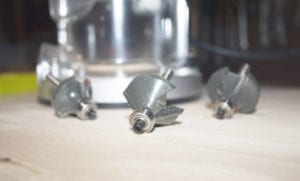 The Ryobi 15-piece router bit set includes 1/4-inch shank, carbide-tipped flush cut (2), dovetail, several straight cutting (4), chamfer (2), ogee, roundover (3), rabbeting, and slot cutting bits. Everything comes in a convenient storage box. The set even includes a couple extra bearings and a hex key to replace them. Ryobi makes other types of router bits such as a cove and V-groove, but those aren’t part of this set.
The Ryobi 15-piece router bit set includes 1/4-inch shank, carbide-tipped flush cut (2), dovetail, several straight cutting (4), chamfer (2), ogee, roundover (3), rabbeting, and slot cutting bits. Everything comes in a convenient storage box. The set even includes a couple extra bearings and a hex key to replace them. Ryobi makes other types of router bits such as a cove and V-groove, but those aren’t part of this set.
I would have preferred a cove or V-groove instead of one the straight cutting bits, that’s nit-picking. The included bits are the most common types for basic routing. You could argue that the additional bits are for more particular uses. This set will get you well on your way to using those others when you’re ready. The trimming and joining are appropriate for a trim router such as the corded Ridgid R2401 trim router or even the new cordless Ridgid trim router. You would want a full-sized router to take advantage of the edging bits. For this review I used the very capable Triton TRA001 plunge router. It covered all the bases.
En Route
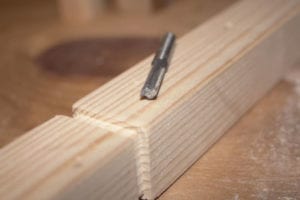 I could have just made a bunch of cuts to show you how the bits performed, but what fun would that be? Instead, I took the opportunity to kill four birds with one stone. I crafted a table and shelves for an empty space in my spare bathroom. This made my very soon-to-be wife happy. When we share the same house, she’d like a table and shelves in the empty space in my spare bathroom. Making her happy and reviewing these bits sounded like a multiple win all around.
I could have just made a bunch of cuts to show you how the bits performed, but what fun would that be? Instead, I took the opportunity to kill four birds with one stone. I crafted a table and shelves for an empty space in my spare bathroom. This made my very soon-to-be wife happy. When we share the same house, she’d like a table and shelves in the empty space in my spare bathroom. Making her happy and reviewing these bits sounded like a multiple win all around.
I wasn’t working from any plans except for the dimensions of the empty space. As such, I just scratched out some notes and dove in. The finished piece would ultimately be painted. I purchased a basic pine table top and milled the legs, apron, and stretchers out of existing pine stock. After marking some dimensions and making some initial cuts, I got to work.
Rabbets and Tapering
I don’t want to go down a “rabbet” trail here, but right after I milled the legs, I built a leg tapering jig. Even the most spartan pieces have some sort of taper and I wanted my table to have them as well. There are several methods, but I like this one from Fine Woodworking the best.
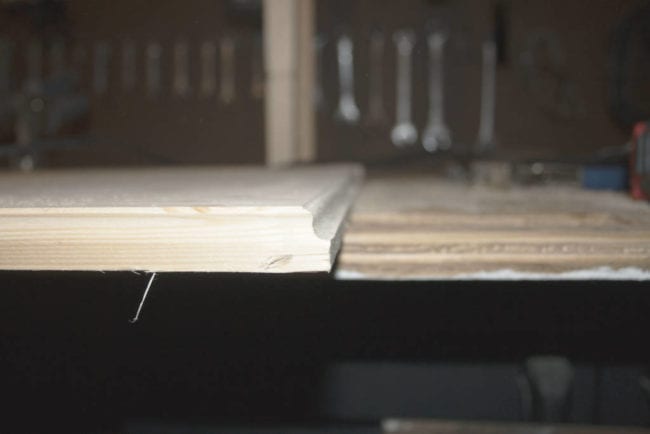
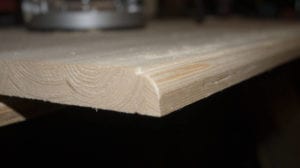 The straight cutting bits were the first used. I routed decorative dados in the top and bottom portions of my newly tapered legs. I used a wider bit on the top and a narrower bit on the bottom. With the Titan router, they made a nice, clean cut. Of course, this brings us back to Routing 101. If you’re routing across the grain, you’re going to have some tear-out upon exit. The wood’s fibers aren’t strong enough to hold on at the edges. That means you can chip or otherwise damage the sharp edges you want to leave. How do the Pros avoid this? Clamp a piece of sacrificial stock of the exact thickness against the piece you want to route. Then make the cut. The sacrificial stock holds the fibers at the edge of your piece securely and prevents unwanted tear-out.
The straight cutting bits were the first used. I routed decorative dados in the top and bottom portions of my newly tapered legs. I used a wider bit on the top and a narrower bit on the bottom. With the Titan router, they made a nice, clean cut. Of course, this brings us back to Routing 101. If you’re routing across the grain, you’re going to have some tear-out upon exit. The wood’s fibers aren’t strong enough to hold on at the edges. That means you can chip or otherwise damage the sharp edges you want to leave. How do the Pros avoid this? Clamp a piece of sacrificial stock of the exact thickness against the piece you want to route. Then make the cut. The sacrificial stock holds the fibers at the edge of your piece securely and prevents unwanted tear-out.
Ryobi 15-Piece Router Bit Set Features & Specs
- Includes: 15 router bits and a protective case
- Bit types: Decorative edging, joining, and trimming
- Shank: 1/4-inch
- Blades: Carbide tipped
Routing 101 Tips from the Pros: Be sure to cut in a counterclockwise motion and always route end grain first. The end grain will tear out, but routing the edge grain last will fix it.
Before I cut the tabletop to size, I tested the roundover bits and the ogee to see what I liked best for the application. I decided to go with the roundover, but to add just a little style, I let the bit plunge just a little low to create a fillet around the top. Both the ogee and roundover bits of the Ryobi 15-piece router bit set made beautiful edges and corners.
For holding all of the stock to my workbench, I used the Kreg Bench Clamp System. I joined the apron to the legs with pocket holes using the Kreg K4 jig and I glued up the top. Then I used the Ryobi chamfer bits to style the stretchers. At the time of this review I hadn’t attached the stretcher to the table, but you can see a sample of the chamfered stretcher in the featured image at the top of this review.
The Bottom Line
The Ryobi 15-piece router bit set made quick work of the details required for this table. With bits this economical, it may also give you an excuse to spend more time in your workshop. With practice, these bits will allow any hobbyist or Pro to make professional-looking pieces. After all, isn’t that why we tinker, cut, sand, join, edge, and glue? I’ll be using the rabbet bit and dovetail bit in upcoming projects. Given what I’ve used so far, I can safely assume they work as well as the straight cutting, ogee, roundover, and chamfer bits. For $49.99, you can be well on your way to making your own functional, beautiful things.

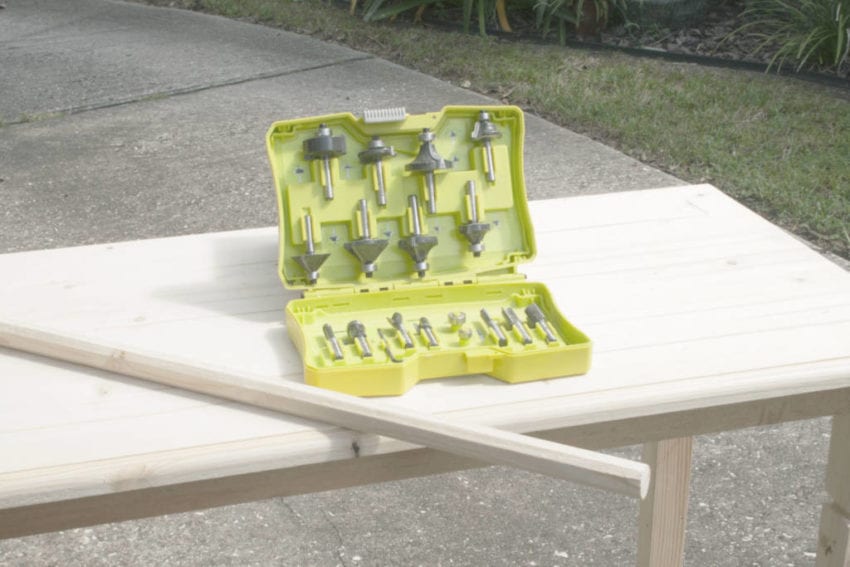
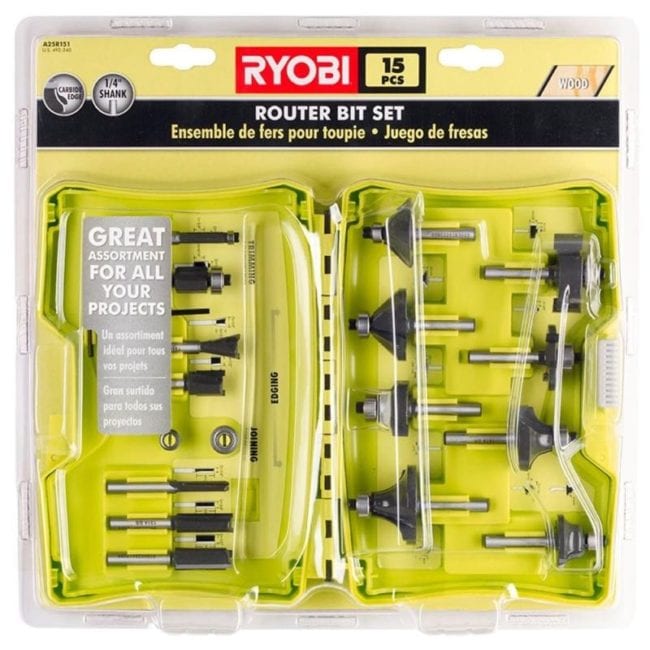
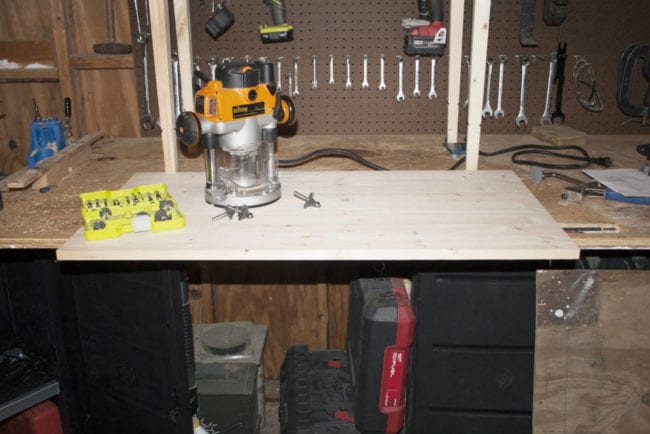
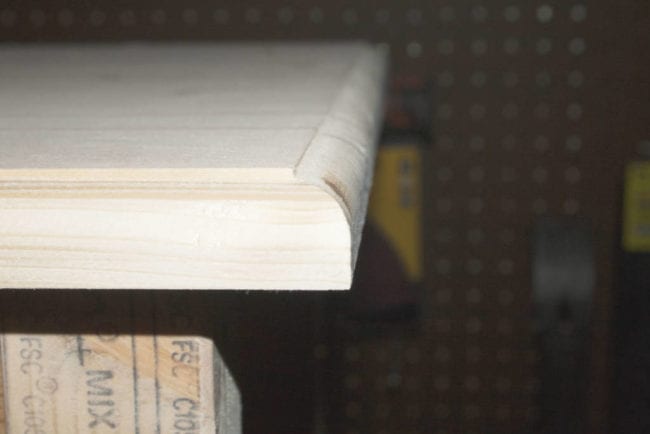



Will these bits fit into my new Makita compact router? I cant find any info on it. I don’t want to open the pack and try because then I cant return it.
Thanks for the review! I found it useful.